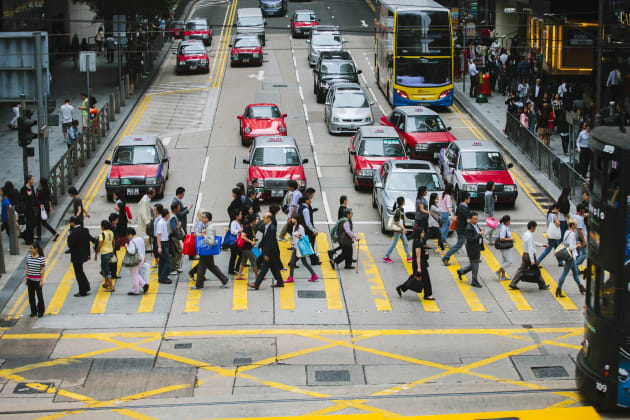There's nothing quite like living in a big city. Everything is close by, transit systems are easily within reach, jobs are aplenty, and there's always something social to undertake. Since the 1950s, more people have been choosing to live in urban environments and the populations in cities are expected to keep rising well into the future.
While there are many positives with living in a metropolis, there are some downsides including a greater risk to health. Several factors have been found to be responsible, such as socioeconomic status, stress levels, and exposure to physical and chemical hazards. The end results of these exposures have been identified as cardiovascular diseases, respiratory ailments, diabetes, cancer and mental health illness. Not surprisingly, these troubles all appear to have higher rates in denser populations.
But a recent study from a group of Korean researchers reveals another possible problem associated with living in a large city. Your skin microbes may be at risk of losing their ability to stay balanced. Based on the results, living in an urban environment could lead to a "fragile microbiome" that could increase the chances for a number of skin ailments and a lack of defence against pathogens.
Normally, our skin is home to a variety of different microbial species. Research has shown the presence of a diverse population of species helps to keep the integrity of the skin intact and prevent the likelihood of infections. A "fragile microbiome" lacks that diversity and as a result, is unable to help as much as it could. When this occurs, several skin problems including dermatitis, psoriasis, dandruff and acne are more likely to happen. For the team, the identification of fragility might offer some hints as to why skin problems seem to occur more frequently in urban environments and possibly how to prevent these troubles from happening.
The team focused on several cities in China, including Beijing, which has a population of 21 million people. They also chose smaller cities, including Guangzhou, Xi'an, Kunming and Hohhot. The latter two had populations similar to that of larger Canadian cities like Toronto, Montreal and Vancouver.
The procedure was rather simple in design. The team swabbed the faces of 231 people — 50 per city other than Guanzhou with 31 samples — and then determined the species and diversity of the bacteria present. The hope was to find a link between population size and differences in skin microbial composition. If the team could find different trends, they might be able to find links to suspect issues such as pollution, climate and socioeconomic status.
When the results came back, the team noticed differences in microbial populations based on city size. Those living in the most urban environments tended to have less diversity in their bacterial populations. As expected, a closer look at the microbial populations revealed a collapse in diversity making the microbiome more fragile.

With this result in place, the team attempted to find one or more reasons for the lack of diversity in larger urban environments. This required moving away from the lab and collecting information on the cities themselves. The team acquired information on over two dozen different factors ranging from gross domestic product to rain days to the levels of polluting chemicals. If the group was right, they could find a link between the lower diversity and one or a few of these parameters.
When the results came back, the team had found links. Yet, instead of only one or two, the data revealed 12. The team had no choice but to conclude the simple act of existing in a larger city puts the microbiome and consequently, a person's skin health at risk.
For the authors, this large number of links demonstrates a rather unsettling reality. The skin microbiome is part of a much larger ecosystem comprised not just of our bodies but also the environment around us. Without major changes to the way these cities function, little can be done to reduce the chances for fragility.
Latest Stories
-
Ministry of Education intensifies campaign against sexual harassment in schools
52 seconds -
Educate the media more on your pronouncement – Prof. Gyampo tells EC
5 mins -
NDC will work with queen mothers to fight poverty – Prof Opoku-Agyemang
12 mins -
NPP running mate slot more dignifying than ‘Pragia’ ride to 4th place – NEIP CEO mocks Alan
27 mins -
Black Sherif’s Zaama Disco to make explosive return to Untamed Empire on December 21
30 mins -
Arsenal fan gets 3-year ban and £260 fine for online abuse of Thomas Partey
32 mins -
Your request to recall Parliament is declined – Bagbin to Afenyo-Markin
41 mins -
NDC MPs will not answer parliamentary recall – Mahama insists
45 mins -
Guardiola ‘didn’t intend to make light of self-harm’
51 mins -
Nothing happened after my studio session with Sarkodie – Safo Newman
56 mins -
Ghanaian man sentenced in US for $2m fraud scheme
58 mins -
ECG debunks claims of power plant scaling down
1 hour -
Black Panther star John Kani outlines plans to groom young African film makers
1 hour -
Development Bank Ghana and AGI partner to revitalise Ghana’s textiles and garments industry
1 hour -
Stonebwoy honoured with EMY Africa Man of the Year (Music) award
1 hour


